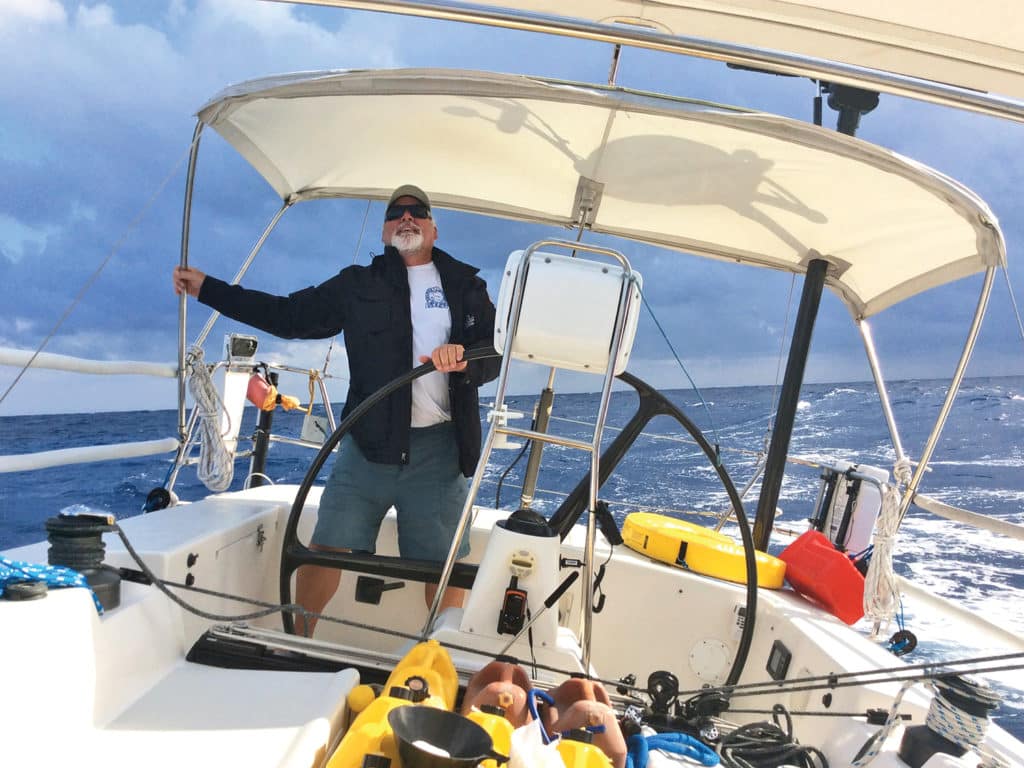
Halfway from Newport, Rhode Island, to Bermuda one recent November, all four crews on the boats in my offshore sailing program listened rapt to the drama unfolding on the VHF radio. We could hear only the U.S. Coast Guard side of the conversation as they rescued the crew of a boat in trouble, but that was enough for all of us.
It was a stinky night, blowing 35 knots and gusting over 40 out of the southeast—our course to Bermuda. The rain was pelting down, and big sloppy seas were coming from three different directions. On our matching 46-foot performance cruisers, all four skippers had independently arrived at the same solution for dealing with the conditions.
Before darkness closed in, we’d doused the main, rolled up the jib and set the hank-on heavy staysail/storm jib on an inner forestay. We jogged along with the wind at about 60 degrees apparent doing 4 or 5 knots of boatspeed, waiting for the wind shift we knew was coming from listening to the high-seas forecast on the single-sideband radio. We knew this gale presaged a cold front and that by sunrise we’d be loving life as we ran toward Bermuda in a clear 25-knot northwesterly.
We later learned that the Coast Guard had pulled all five people off a well-built, 50-foot double-headsail-rigged cruising ketch about 80 nautical miles from our position. Its crew had tried to cope with the deteriorating conditions by dousing all sail and motoring into the wind. In those conditions, they’d ended up rolling the gunwales under. Then the engine quit. As they drifted, the deck was leaking, and every member of the crew was seasick, cold, wet, scared and exhausted. Calling the Coasties for rescue seemed like a no-brainer, and the decision was unanimous. With that call, the owners of the boat gave up on the cruising dream they’d been working toward for many years.
Practicing Patience
Every November, the southbound routes from the East Coast are furrowed with sailboat wakes as cruisers abandon the rapidly approaching icy winter weather and set sail for the tropics. Some head for Florida, others for the Bahamas, and still others for the Caribbean. Some crews prefer to buddy-boat their way, some like to join rallies, and others prefer to sail by themselves. In more than three decades of sailing other people’s yachts (and lately my own boat) south in the fall, if there is one piece of advice I’d give anyone contemplating this voyage it would be: Throw away your calendar. The weather is what it is, and your schedule matters not a whit.
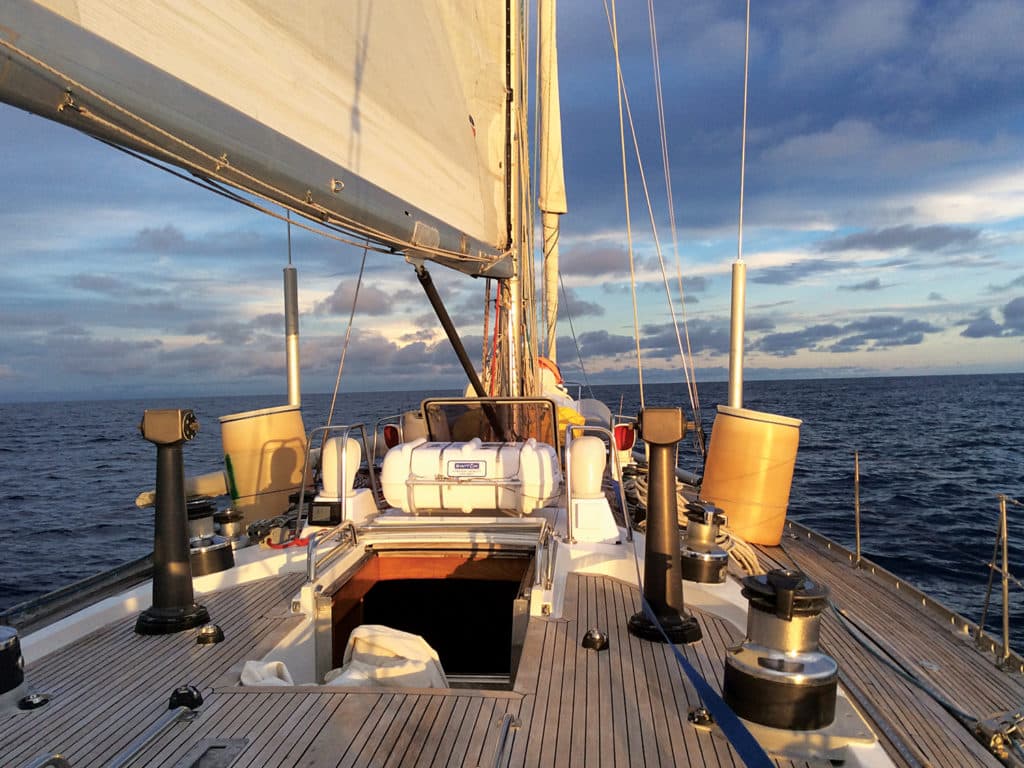
On a recent passage with a couple starting their dream of cruising the world on a well-found heavy-displacement cutter, we ended up stuck in Beaufort, North Carolina, for a full month as one system after another pounded through at 36- to 60-hour intervals. There was just no way we could pick a decent window to get across the Gulf Stream and far enough along the track to Tortola in the British Virgins to make it clear of the storm paths rolling through.
A couple of professional delivery crews passed through town and made a break for it, but they later reported very miserable passages and told me I’d done the right thing in waiting with my inexperienced crew. In the end, we had a delightful passage in near-ideal conditions. After completing that trip, I returned to Beaufort to get my own, much faster boat with a more experienced crew. I ended up waiting for another week for a weather window before we left. The point is you have to be patient. Good—or at least reasonable—conditions will roll around sooner or later. I tell my clients, “You’re cruising; you’re already home, so what’s your rush?”
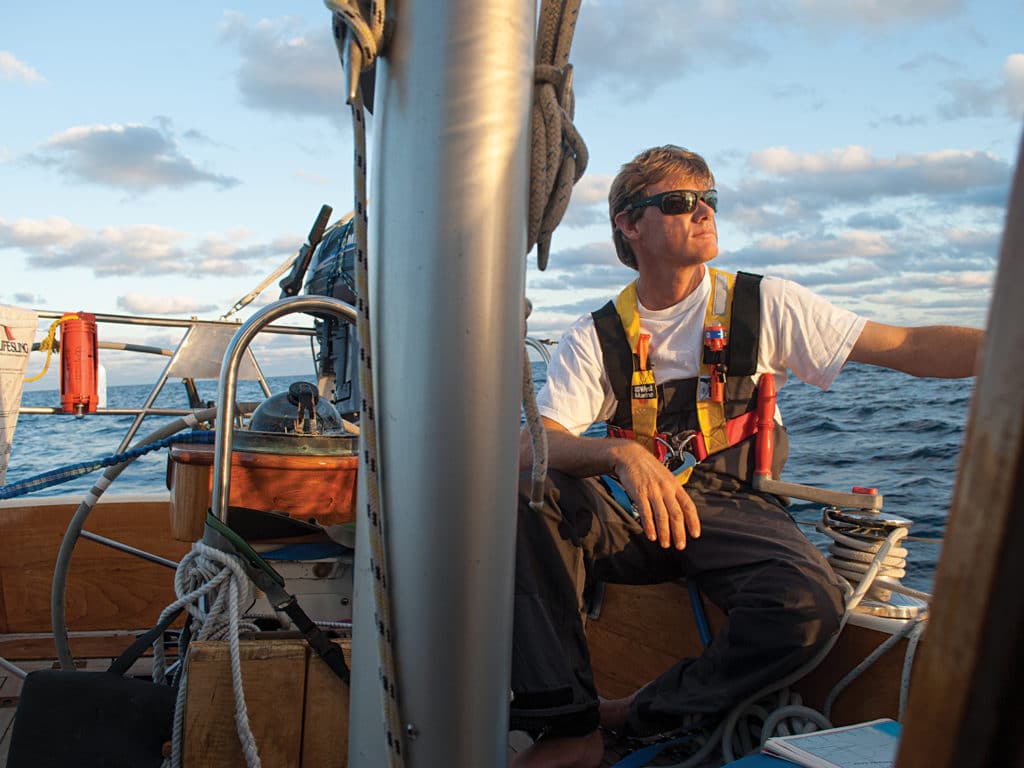
I usually leave sometime in November from Newport, Rhode Island, bound for Bermuda. If you have a good boat capable of making the 650-mile passage in five days or less, except in rare years, you should be able to pick a good weather window, if you’re patient. Note how many times I qualified that statement. We have much better weather information nowadays than when I started delivering boats, but bear in mind that weather forecasting is not perfect, nor are professional weather routers. You, your crew and your boat should be prepared to get clobbered. Just as important, you should be prepared to motor if your boatspeed drops below about 5 knots; save the purity of sailing for when you’re south of Bermuda. That piece of North Atlantic water on the way to Bermuda bears a justified fierce reputation. It’s not a place to lollygag. For forecasts and Gulf Stream info, I use the excellent GFS forecast models from passageweather.com.
Planning and Preparation
Before I leave on a passage, I have my sails professionally inspected and any defects repaired. I have them pay special attention to batten pockets and sail slides. Sailmakers will do this for you for at a surprisingly reasonable price.
Another thing I do is load up the boat with spare fuel filters. I get a couple of 5-micron elements for the engine and at least half a dozen 30-micron elements for the Racor filter. You might run for years along the coast on the same filter, but once you get offshore and the seas start bouncing the boat around, any crud in the bottom of the fuel tank gets shaken up, and you’ll find yourself having to change filters until your tank is clean.
Along those lines, make sure your engine is happy being run for a long period. Test it by motoring continuously for several hours. Too often engines in sailboats are used simply to leave the mooring and charge the batteries. That’s a rotten thing to do to a diesel.
Your engine manual should tell you what rpm you should achieve running in forward gear. Get clear of other boats one day, and slowly mash the throttle all the way to the limit. Leave it there for five minutes or so. You won’t hurt your engine. Check the engine temperature to make sure it stays under about 180 degrees. If it doesn’t, it’s time to give your cooling system some love. If it revs above the maximum rpm rating, you might be able to add pitch to your propeller; if it comes up short, you might have too much pitch. (Obviously, I’m simplifying, so check with your mechanic before making changes.) Your cruising rpm is 75 to 80 percent of maximum rpm. Top up your diesel tanks and run for several hours at that speed, then fill the tank again to give you an idea of your fuel consumption; this will be an important number to keep in mind when you start thinking about fuel management on passage. Bear in mind that running at 60 percent of max rpm can greatly increase your range when you have to stretch your fuel in a prolonged calm. I always leave my main up for a little extra push and to damp any rolling—unless the sail is slatting hard, which can kill your sail in short order. Bear in mind also that it is not really that hard to make 3 or 4 knots just sailing in light airs.
While you’ve been preparing your boat and stowing spares, you also should have been thinking about crew. I like a three-person crew who can all steer a compass course and know how to sail, including when to trim or ease the sails, and when to call the skipper with questions. A three-person crew allows my favorite watch system: three hours on and six hours off. This allows the skipper and crew almost a full night’s sleep every nine hours, a vital element for keeping everyone safe and happy.
Enticing a good crew to take the time out to sail with you is a conundrum often solved with the promise of good food. My basic rule for provisioning is to never put any food on the boat that you wouldn’t eat at home. So no canned stew and very few tins of tuna, and definitely none of those cups of soup you add boiling water to. Our daily routine is for everyone to help themselves to breakfast cereal (unless someone feels like cooking for the crew); lunch is help-yourself cold- cut sandwiches, though in colder weather we’ll sometimes fall back to tomato soup and grilled-cheese sandwiches. And there is always plenty of peanut butter and jelly aboard.
Except in the roughest weather, we do our evening meal together at the 1800 watch change. Stews, chili and other meals can be premade and frozen before departure. Unless it’s rough, pasta is easy to cook underway and, along with rice, makes easily stowed emergency provisions too. Look at cookbooks and the People & Food column in this magazine and vary the menu, concentrating on stick-to-your-ribs meals up north and lighter, quickly cooked or uncooked fare once you reach the tropics.
Under Sail
All the care you put into provisioning will come to naught if your crewmembers aren’t hungry. Seasickness is the bogeyman for every sailor new to offshore passagemaking, and more than a few experienced sailors too. Experience has shown me that getting your favorite medicine into your system three days before your planned departure will go a long way toward preventing “Gulf Stream gastritis.” It doesn’t seem to matter which medicine you take (I use Bonine, which doesn’t make me as drowsy as some other meds), just get it into your system. During my offshore sailing program one year, I followed this plan when I left Newport for Bermuda with 54 people (aboard 10 boats) who’d never been to sea before. Only one mighty-man-of-the-sea who “never gets seasick” was sick. My wife follows this prescription and has gone from getting seasick on a dewy lawn to running the boat all night on the 200-mile passage across the Gulf of Maine from Cape Cod to Mount Desert Island alone on deck. A last important note: Don’t try a new seasick medicine for the first time right before your passage. A couple hundred miles at sea is not the place to discover you have a nasty or dangerous reaction to whatever you took.
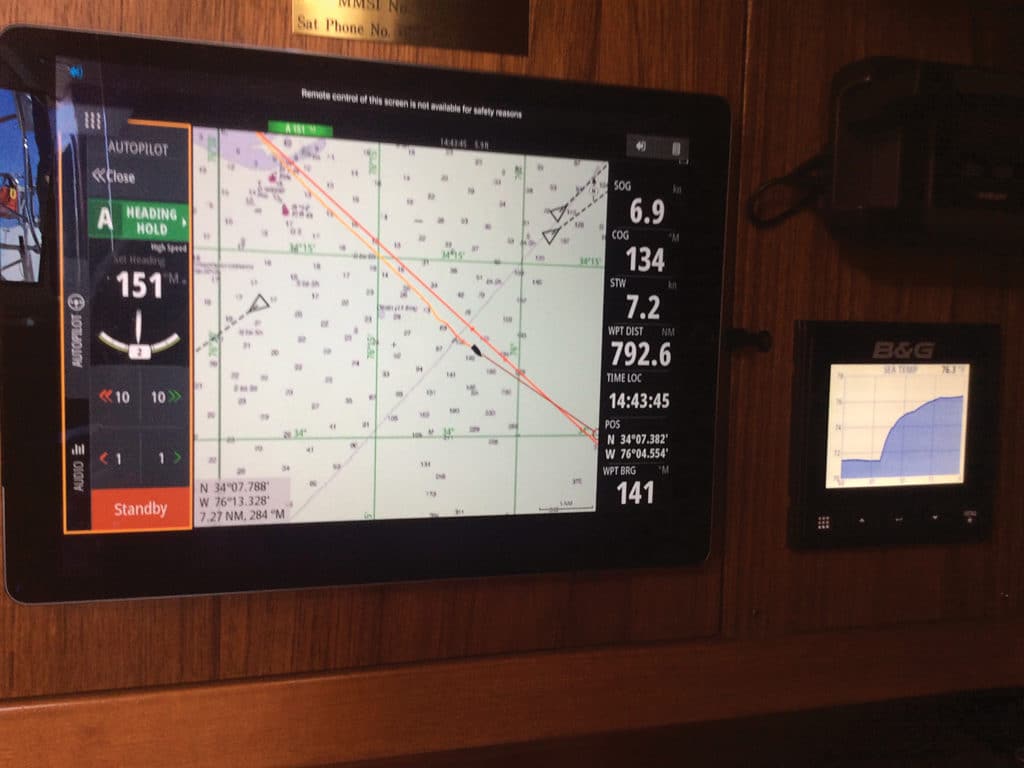
When we left on the passage that caused the crew of the 50-footer to abandon ship, our forecast had called for the southeasterlies to blow at a manageable 25 knots, not the 35 to 40 we got. If that unfortunate crew had known to hoist a staysail and perhaps a reefed mizzen, and then either jogged long as we did or hove to, they might still be living their dream on their boat.
Heaving to is one of the most important of an offshore skipper’s tools. To heave to, you back your jib or staysail—that is, you sheet it hard on the wrong side of the direction the wind is blowing—and sheet in your reefed main enough to keep the wind about 60 degrees off the bow with your helm lashed hard over as if you’re trying to get the boat to tack. Done correctly, the boat will sit quietly through pretty intense conditions. This is a technique worth discussing and practicing before departure.
Though it happens, with modern forecasting and patience, you will rarely encounter storm conditions on the short legs from New England to Bermuda, and from Bermuda south to the islands, but it is best to understand and be prepared should it hit the fan. Fatty Goodlander’s excellent book Storm Proofing is recommended reading before you set sail.
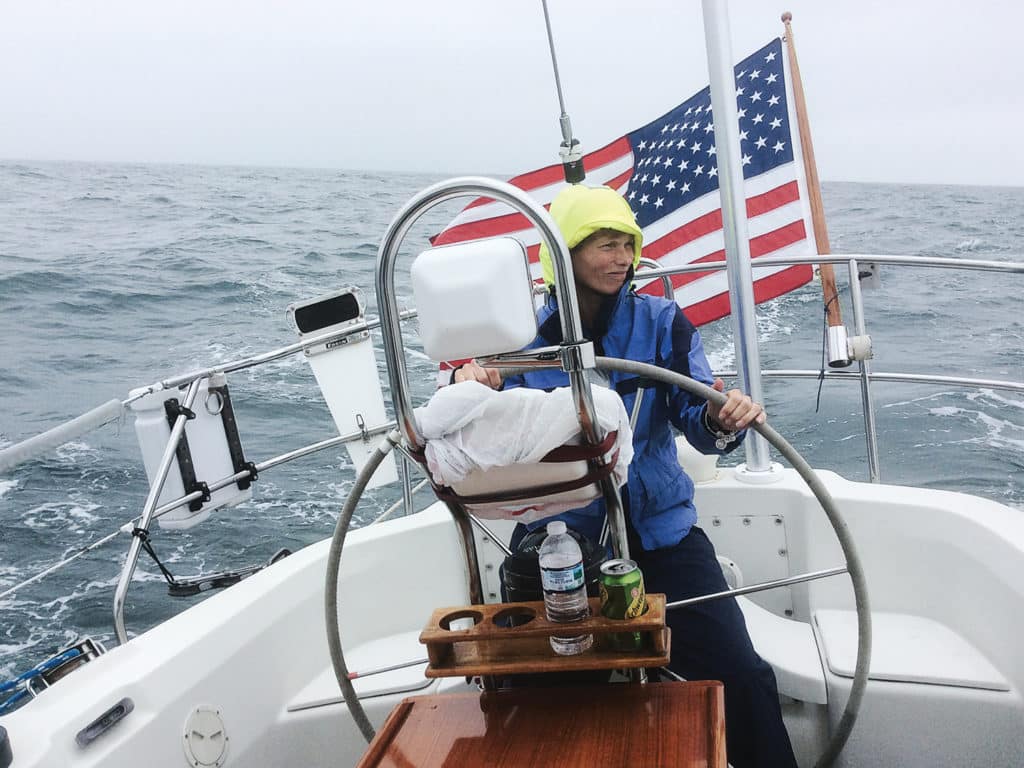
Yes, reading articles like this one is enough to scare anyone into taking up RV’ing, but don’t let it. There is little that is more satisfying than sailing your boat at sea toward a distant horizon. There’s a reason so much has been written about the romance of the ocean. It’s worth the trouble to just get out there. And as Joshua Slocum once wrote, “To any young man contemplating a voyage, I would say go!”
One final word: Cruising sailor Douglas Bernon told me that before he and his wife, former CW editor Bernadette Bernon, left on their multiyear cruise, I had given him the most important of any advice he’d received before they left. “No matter what,” I’d told him, “each day, be sure to stop whatever you’re doing, relax, and watch the sunset.” And so I pass that along now: Don’t get so caught up in the preparation and operation of the boat that you forget to have fun!
As a delivery skipper, Andrew Burton has logged more than 350,000 nautical miles under sail. Aboard his Baltic 47, Masquerade, he also helps those new to passagemaking understand what it takes to cruise offshore successfully under the auspices of his company, Adventure Sailing. Upcoming voyages include passages from Rhode Island to Bermuda and the Caribbean, cruising through the islands, and a celestial-navigation passage from the British Virgin Islands to Key West. For more information, visit his website.
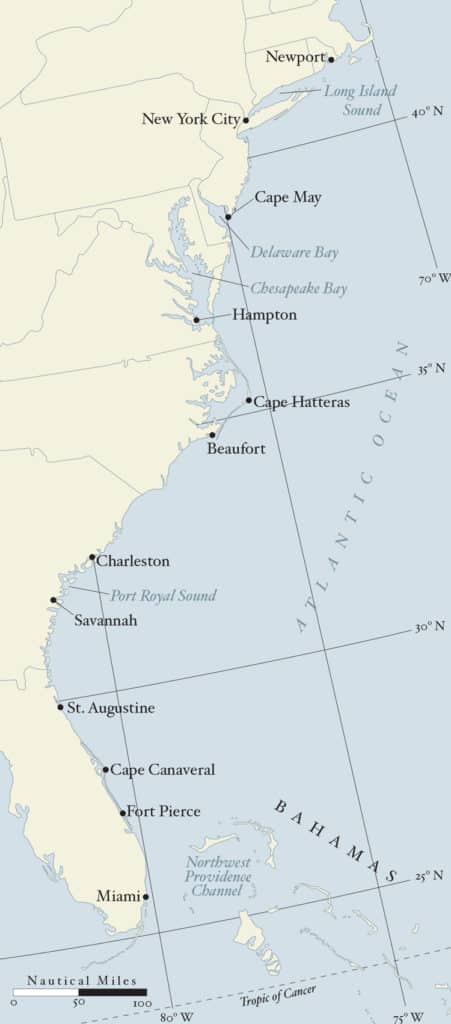
If the weather is bad, and systems keep moving through too often to leave you without a good window to make Bermuda from New England, the best option is to hop down the coast to Beaufort, North Carolina, one of my favorite ports on the East Coast. Typically, from New England, I head west down Long Island Sound to New York City. From Sandy Hook, New Jersey, at the entrance to New York Harbor, it’s a 110-mile hop down the Jersey shore to Cape May. I’ve had easy rides in smooth water half a mile off the beach, though it was blowing 40 knots from the northwest.
If conditions become uncomfortable, you can bail out into Manasquan Inlet or Atlantic City, where you’ll find good year-round marinas. From Cape May, it’s 150 miles across the mouth of Delaware Bay and down the DelMarVa Peninsula into Chesapeake Bay, where you can either head down the Intracoastal Waterway or pop into Hampton or Little Creek, Virginia, while you wait for a perfect weather window to sail the 200 miles around Cape Hatteras to Beaufort. From Beaufort, if you want to carry on to the Caribbean, it’s 850 miles to the important 25 degrees north, 65 degrees west waypoint that lines you up to reach across the trade winds and westerly current the final 400 miles to the Virgin Islands.
If you’re heading to the Bahamas or Florida, and prefer to be on the ocean rather than the Intracoastal, from Beaufort you have the choice of making the 150-mile overnight run to the Winah River or the 200 miles to Charleston, South Carolina. Charleston is a good jumping-off spot for 25N/65W, but it’s no shorter than leaving from Beaufort.
South of Charleston, you have lots of ports to choose from in Georgia, should you want to tuck in, including Port Royal Sound, the Savannah River and Brunswick.
In the 300 miles down the east coast of Florida to Miami, without local knowledge, your ports are limited to Jacksonville, the sometimes-tricky St. Augustine Inlet, Cape Canaveral, Fort Pierce, Lake Worth Inlet, Port Everglades and, finally, Miami. The latter three are good spots from which to jump across the Gulf Stream to the Bahamas.
If you’re heading to the Caribbean, you won’t have done yourself any favors by departing from so far south; it’s still 850 miles to the 25N/65W waypoint, and now you stand a good chance of having to sail upwind a good part of the trip. Your tactic here should be to wait for a cold front to approach. As the wind veers from the prevailing southeast, make your departure when it is out of the south making for Great Isaac Cay at the entrance to Northwest Providence Channel. The wind will continue to veer as the front approaches and moves through. If you can make good speed, you might carry southwest to northwesterly winds most of the way to the waypoint.
An alternative is to island-hop all the way to the Virgin Islands via the “Thorny Path,” about which much has been written.
Rally Ho
Hank Schmitt, the founder of the crew-networking service Offshore Passage Opportunities, this year will be running the 20th edition of his North American Rally to the Caribbean (NARC). Starting October 26 from two locations—Newport, Rhode Island, and Little Creek, Virginia—the NARC will call in Bermuda on the opening leg before the second stanza carries on to St. Maarten. The rally is free and includes discount docking space, parties, professional weather routing, and much more. For more information, visit the event website.








